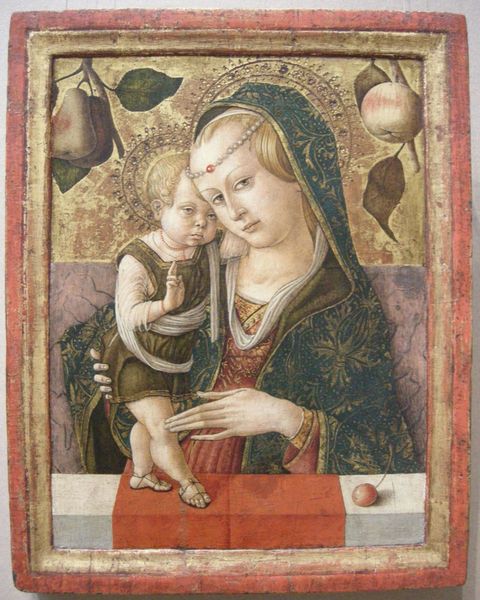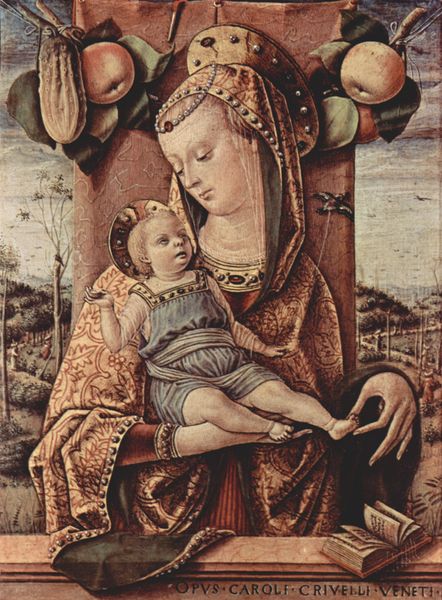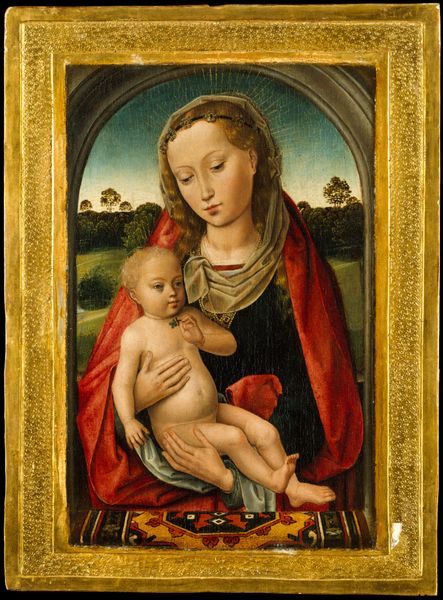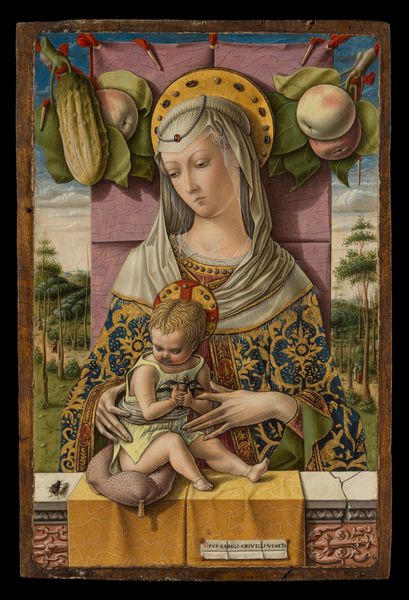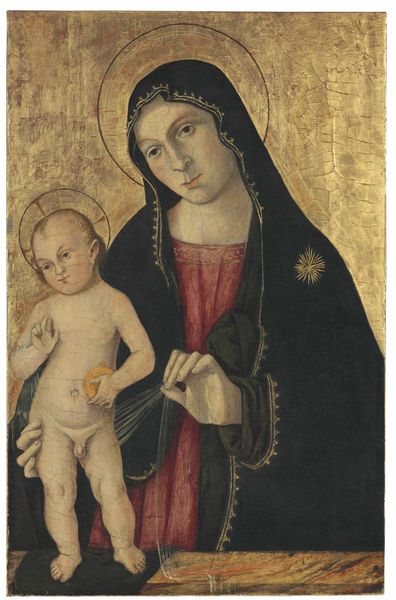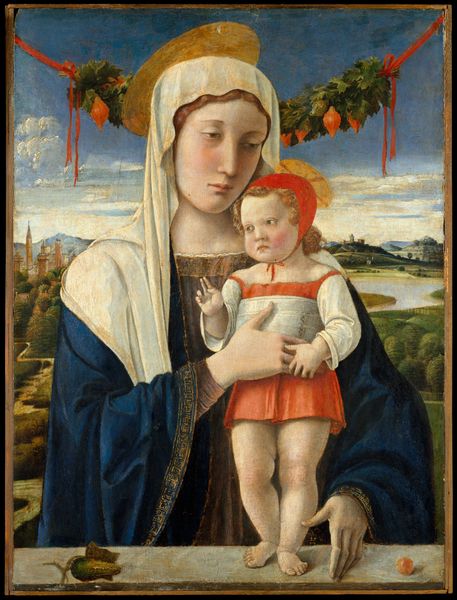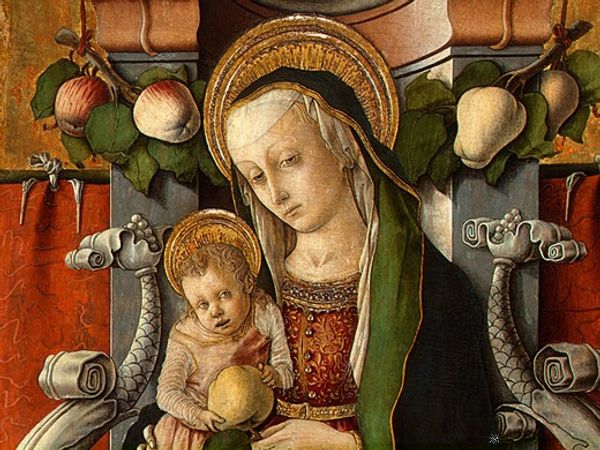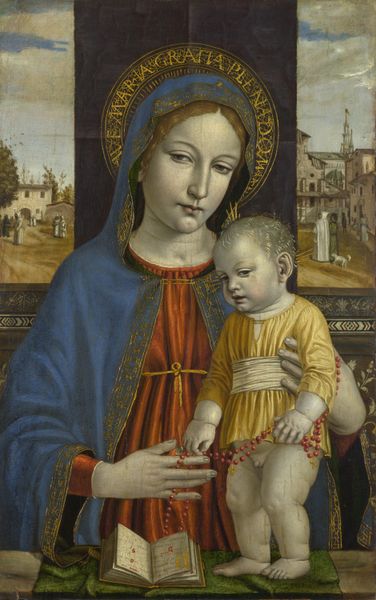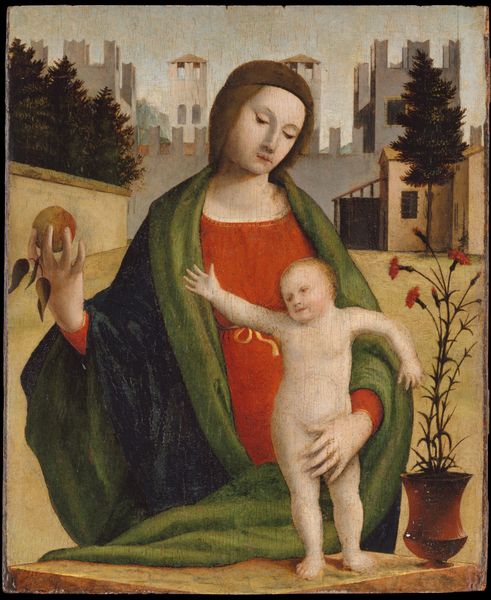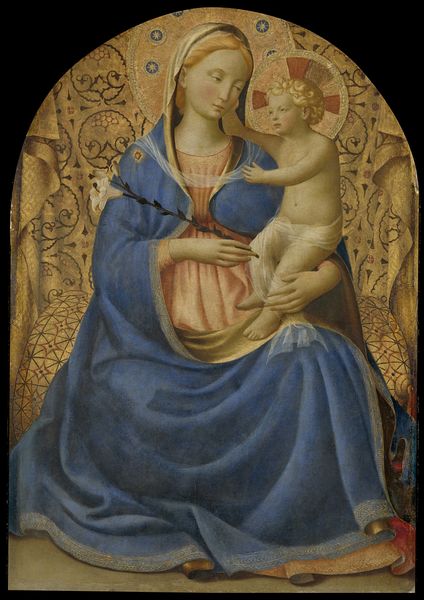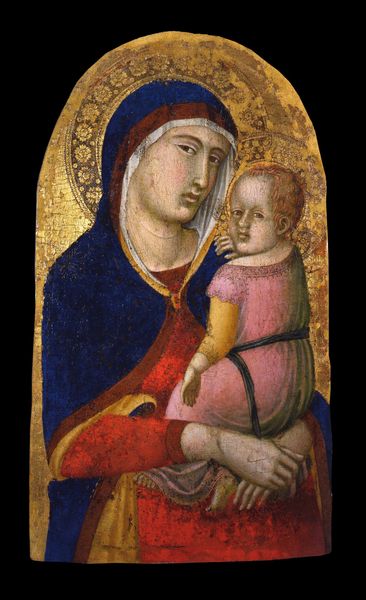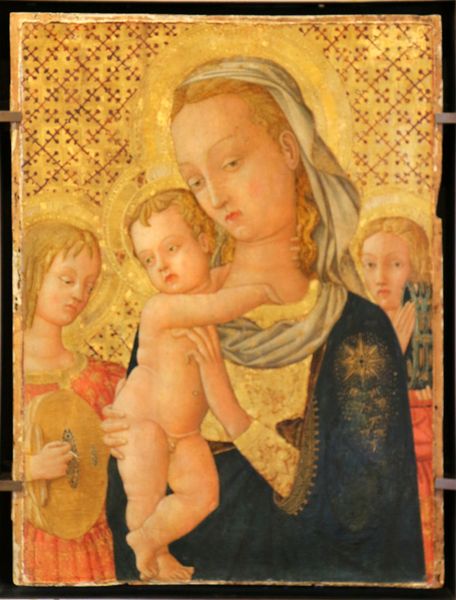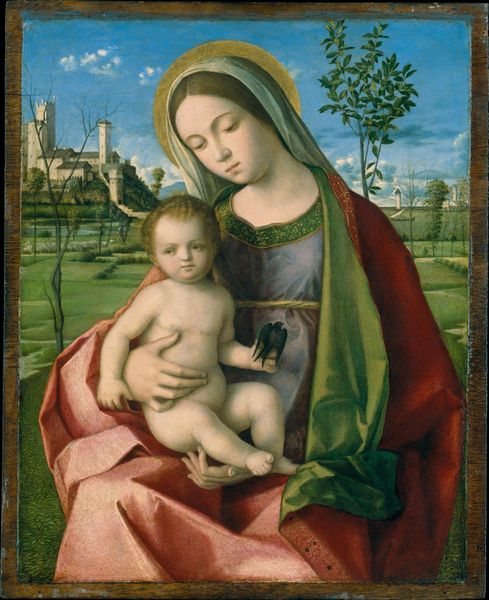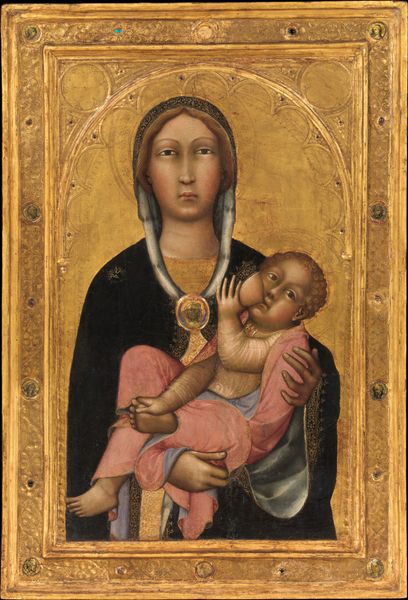
painting, oil-paint
#
portrait
#
painting
#
oil-paint
#
figuration
#
madonna
#
oil painting
#
history-painting
#
italian-renaissance
Dimensions: painted surface: 32.8 x 24.7 cm (12 15/16 x 9 3/4 in.) support (includes frame, carved from single piece of wood): 39 x 30.9 cm (15 3/8 x 12 1/8 in.)
Copyright: National Gallery of Art: CC0 1.0
Carlo Crivelli painted this 'Madonna and Child' around 1480. The painting strikes us with its composition, where the figures emerge from a gold-leafed background, surrounded by symbolic elements such as fruit, each carrying layers of meaning. Crivelli meticulously renders details, inviting us to decode the underlying structures and semiotic relationships within the artwork. The Madonna's gaze and the Christ Child's gesture are not merely representational; they are calculated elements that challenge established meanings. Note how the Madonna's dress and the halo subtly destabilize conventional representations of holiness. It's a study in contrasts, where the sacred meets the earthly. Consider the apple and pear in the upper corners. These aren't just decorative additions, but function as signs within a larger semiotic system, reflecting theological and philosophical inquiries into the nature of good and evil, creation and fall. Crivelli's attention to the interplay of form, symbol, and structure invites us to recognize that art functions as a site of ongoing interpretation.
Comments
No comments
Be the first to comment and join the conversation on the ultimate creative platform.
